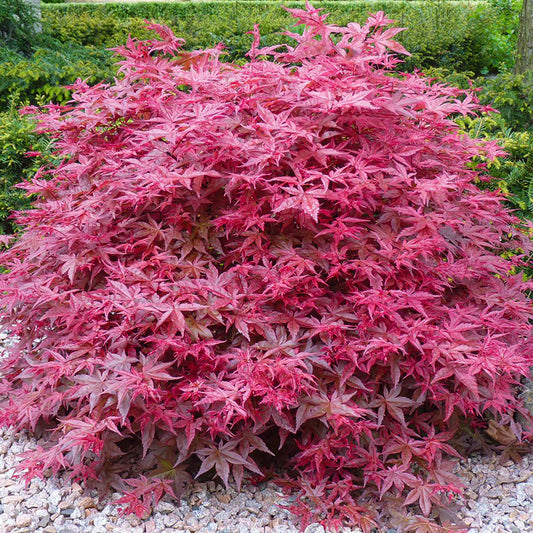Product description
The Snow Queen is a fast growing, medium size tree with a distinctive white bark that peels off in sheets, creating a wonderful ornamental effect. When first exposed, the peeling bark appears as a pale orange. The leaves are a deep green, creating a great contrast against the white trunk. The leaves have serrated edges and turn to deep shades of bronze and yellow in the autumn. In spring, the tree bursts with a display of vibrant golden catkins amongst the fresh green foliage. The Snow Queen is deciduous and will lose its leaves in winter. This is the season to fully appreciate the striking beauty of the stark, white graceful trunk and branches.
Although the Snow Birch looks delicate, it is fully hardy and well suited a range of conditions and climates. It prefers moist but well drained soil. Plant in an area of full sun or partial shade.
Unlike other Birch trees, the Snow Queen develops white bark rapidly on trees that are only three years old. If you are creating a new garden, you won’t have to wait years and years to get the stunning effect of these graceful trees.
This tree, also known as the Doorenbos, will become a statement piece in your garden. It grows tall and the branches do not droop, maintaining a pyramidal shape, making it ideal for smaller sized areas. In a larger area, plant in a close set of three for a lovely feature grouping. To create a delightful colour palette, plant your Snow Birch next to a Betula Purpurea. The rich purple foliage contrasts beautifully with the green leaves of the Snow Queen.
Plant specs, care guide & tips
Key features
Specifications
When to plant
| Jan | Feb | Mar | Apr | May | Jun | Jul | Aug | Sep | Oct | Nov | Dec |
|---|---|---|---|---|---|---|---|---|---|---|---|
Planting and period of interest times are general guidelines and may vary based on your location and conditions. For best results, consult local gardening resources.
Instructions
Top Tip
Prune Betula trees during their dormant period in late autumn or winter to prevent sap loss. Remove dead or damaged branches and thin out the canopy to improve airflow and sunlight penetration. Avoid heavy pruning, as this can stress the tree. Apply a slow-release fertiliser in spring to support healthy growth, and consider planting Betula in groups for a stunning naturalistic effect in your garden.
How to Water
Water newly planted Betula trees deeply and regularly during the first year to establish their root system, especially in dry spells. Mature Betula trees generally require less frequent watering but benefit from additional hydration during prolonged dry periods or hot summers. Ensure the soil remains consistently moist but not waterlogged. Early morning watering is ideal, as it allows excess moisture to evaporate during the day, preventing fungal diseases.
How to Plant
To plant Betula trees, select a sunny or partially shaded location with moist, well-draining soil that is slightly acidic to neutral. Dig a hole twice as wide and just as deep as the root ball. Gently loosen the roots before placing the tree into the hole, ensuring the top of the root ball is level with the ground. Backfill the hole, firm the soil, and water thoroughly to settle the roots. Add a mulch layer around the base to retain moisture and suppress weeds, keeping it a few centimetres away from the trunk to prevent rot.























